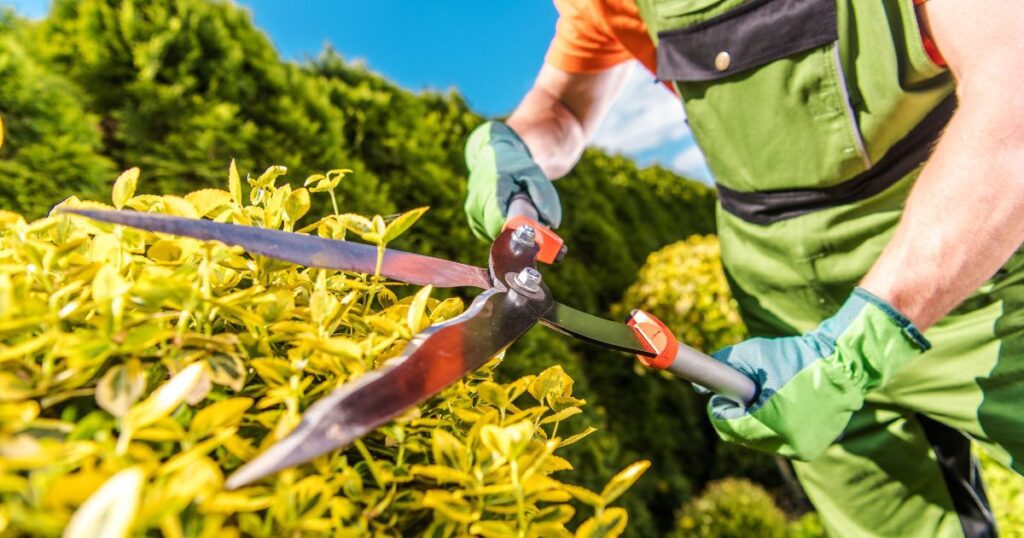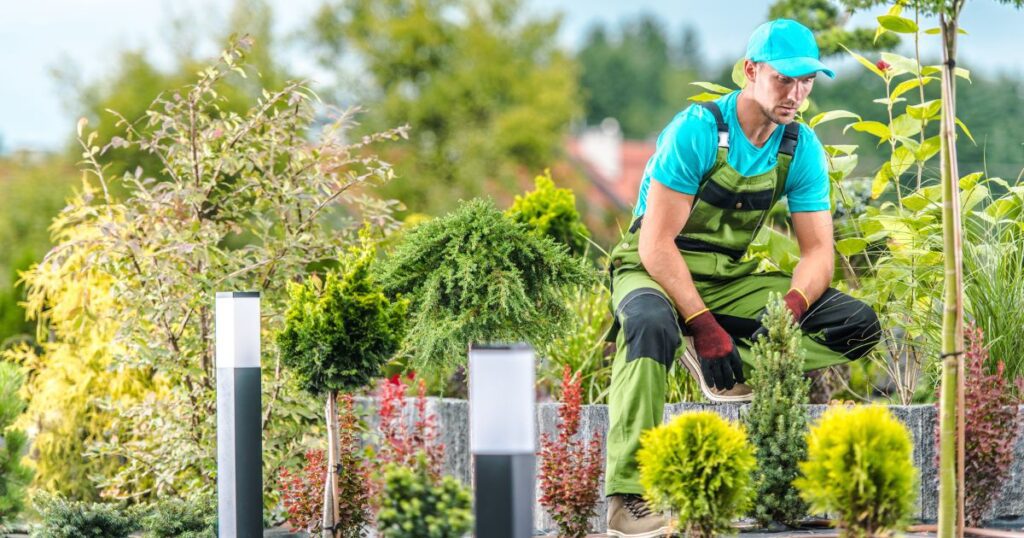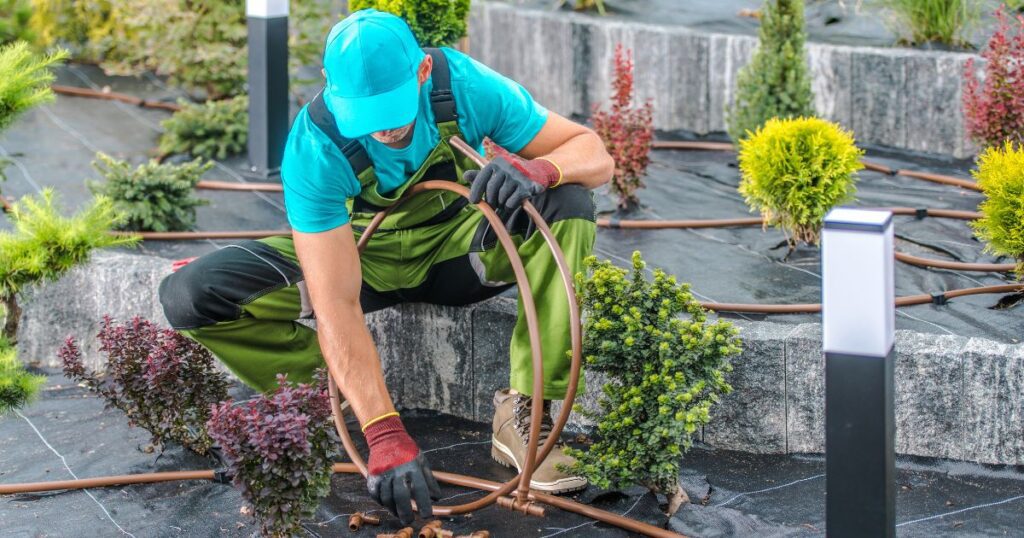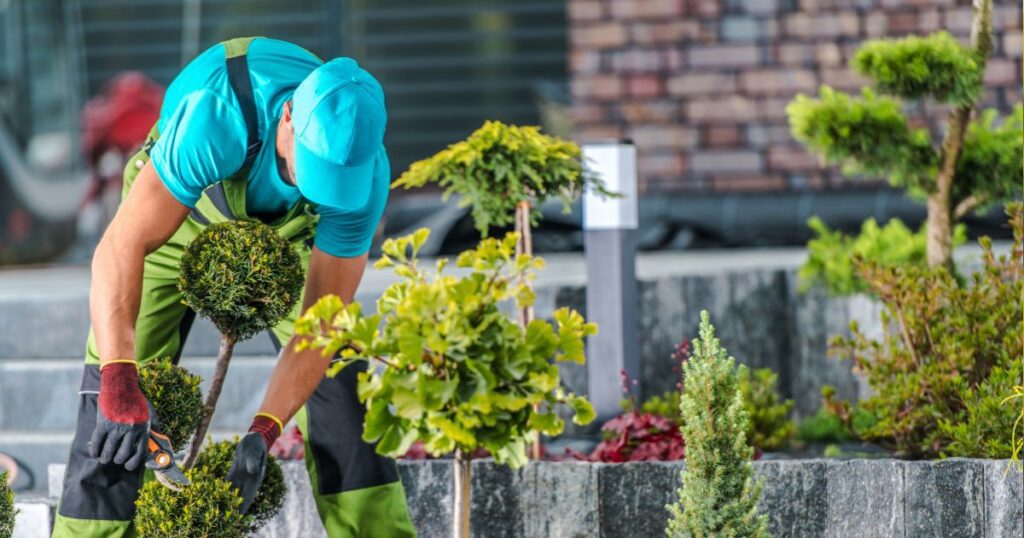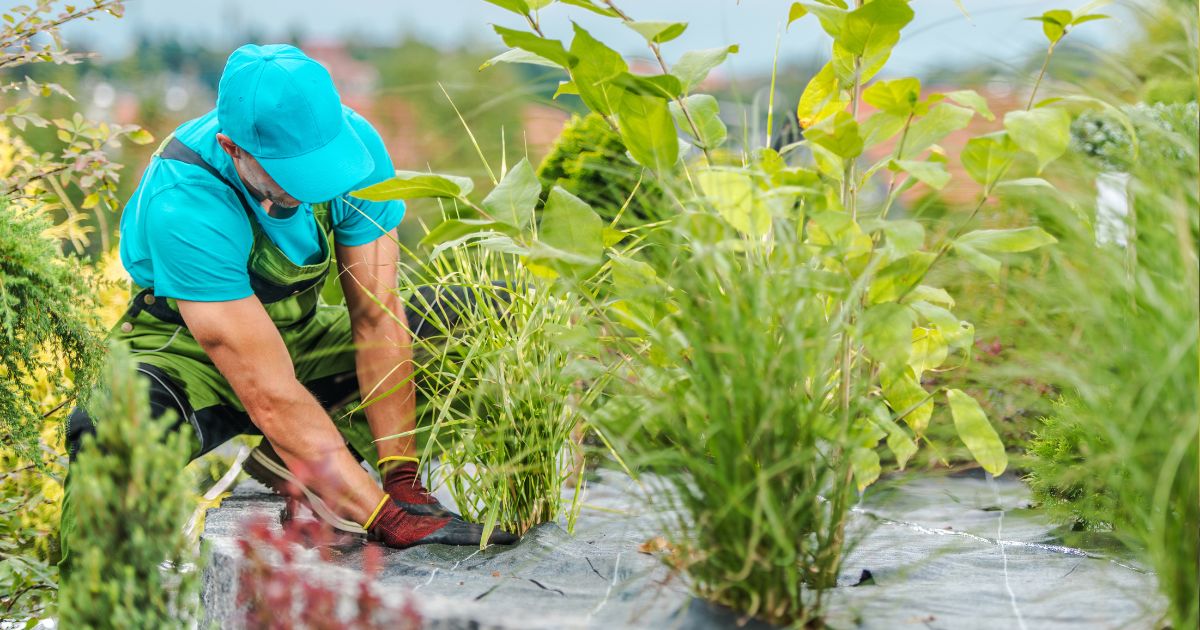
Introduction
Are you curious about the hidden world of landscaping superheroes? Prepare to be dazzled as we pull back the curtain and reveal the thrilling daily adventures of these green-thumb warriors. What does a landscaper do on a daily basis? From designing lush gardens to taming unruly lawns, their days are filled with epic battles against weeds, shrubs, and unruly hedges. So, grab your gardening gloves and get ready to join us on this playful escapade as we uncover the captivating secrets of what a landscaper does on a daily basis. It’s time to embark on a horticultural journey like no other!
A landscaper’s daily tasks involve a range of activities, such as maintaining and caring for landscapes, including mowing, trimming, and edging lawns, pruning trees and shrubs, planting flowers and plants, and managing irrigation systems. They may also perform tasks like mulching, fertilizing, and applying pesticides or herbicides when necessary. Additionally, landscapers often engage in tasks such as designing landscapes, meeting with clients, and providing recommendations for landscape improvements.
Definition of Landscaping
Landscaping has been around for centuries, with evidence dating back to the ancient civilizations in Egypt and Rome. In its simplest form, landscaping refers to any activity that alters or modifies the physical features of an area outside of buildings or homes. Over time, it has developed into an art form that involves the blending of natural elements like plants and water with hardscaping such as rocks and concrete.
The scope of landscaping is vast and includes designing outdoor spaces for residential properties or commercial settings such as parks and recreational areas. The process involves creating a design plan that takes into account factors such as soil type, climate conditions, topography, sun exposure needs, drainage requirements, and more.
RELATED: How Much Does a Landscaper Owner Make: Uncovering the Green
Aesthetics – A Key Factor
Aesthetics plays a significant role in landscaping design because it influences how people perceive their environment. It creates a sense of balance between human-made structures like buildings or houses with natural elements like trees and plants- making it visually appealing – which can boost mood levels positively.
Moreover, well-designed landscapes are not just about aesthetics; they also offer several functional benefits, such as reducing soil erosion that occurs naturally over time due to weather changes like heavy rainfall or wind patterns. Some other functional benefits include improved air quality by reducing dust levels in urban areas; providing habitat for wildlife; controlling temperature variations through shade provided by trees; reduces energy bills by improving energy efficiency, among other benefits.
Importance of Landscaping
Landscaping is not just about the visuals; it has significant importance in our daily lives. It has been proven that green spaces and natural environments are essential to human health and well-being. In urban areas with limited access to green spaces, landscaping plays a vital role in providing people with an area where they can relax and unwind.
Environmental Benefits
A well-manicured landscape provides several environmental benefits. Plants absorb carbon dioxide from the atmosphere, producing oxygen which is necessary for our survival.
Additionally, plants act as air filters by absorbing pollutants like nitrogen oxide and sulfur dioxide from the air. This means that having a well-maintained landscape can help reduce air pollution levels significantly.
Moreover, a well-designed landscape can help with water conservation by reducing water runoff. This helps prevent soil erosion and stormwater pollution- which protects aquatic life too!
Economic Benefits
Landscaping also provides economic benefits. A well-maintained environment improves property values as it makes homes or commercial properties more attractive to potential buyers or renters.
It also enhances the business premises’ image and makes them look more professional. Landscaping involves modifying natural elements for visual appeal while still conserving the environment’s functionality—having an aesthetically pleasing outdoor space with functional design elements resulting in multiple benefits ranging from environmental gains to improved mental health levels – something worth investing in!
Daily Tasks of a Landscaper
Planning and Designing
As a landscaper, one of the main tasks is to plan and design the landscape. This involves meeting with clients to discuss their needs and preferences.
The landscaper must listen carefully to the client’s desires and make suggestions based on their experience and knowledge of plants and design aesthetics. After gathering information from the client, the landscaper will create a design plan for the landscape.
This may include drawing up plans or using computer software to create a visual representation of the proposed landscape. The plan should take into account important factors such as soil type, drainage, sun exposure, and water sources.
Selecting appropriate plants, trees, and shrubs for the area is also an important part of planning. The landscaper must consider factors such as climate, soil type, sun exposure, maintenance requirements, and desired aesthetics when choosing plants for the landscape.
Installation and Maintenance
Once a design plan has been created and approved by the client, it is time for installation. Preparing the soil for planting is an essential step in this process. The landscaper must ensure that soil is properly amended with nutrients such as compost or fertilizer before planting to promote healthy growth.
Installing hardscape features such as patios, walkways, and retaining walls also falls under the installation phase of landscaping projects. These features are often made from materials such as stone or concrete blocks.
Planting trees, shrubs, flowers, and other vegetation is another crucial aspect of the installation that requires skillful placement techniques to ensure proper spacing between plants. Installing irrigation systems ensures proper watering throughout all aspects of installation – both hardscaping elements as well as plant life.
Regular maintenance after installation keeps landscapes looking beautiful for many years after completion by mowing lawns regularly during growing seasons (spring through fall), pruning plants during their dormant periods (late winter or early spring), and removing weeds as soon as they appear. A landscaper’s daily tasks vary depending on the needs of each project.
However, every project requires a combination of planning, design, installation, and maintenance skills. Landscaping is an art that requires careful attention to detail and knowledge of plants and design principles to create beautiful outdoor spaces for clients.
Specialized Tasks of a Landscaper
Tree Care
Trees are an essential part of any landscape, and proper maintenance by a landscaper is essential to ensure their longevity and health. Tree trimming or pruning is one such specialized task that requires expertise.
The landscaper must have a good understanding of tree anatomy, as well as knowledge of the specific species they are working with. Trimming involves removing dead or damaged limbs to increase the tree’s overall health and reduce the risk of falling branches.
In addition to trimming, landscapers also carry out tree removal tasks in case they pose a danger, such as those that are dead or diseased. A trained professional can determine whether removal is necessary and how best to do it safely without damaging nearby structures or other trees.
Water Features Installation and Maintenance
Water features such as fountains, ponds, and waterfalls add beauty and tranquility to any landscape. Installing them requires careful planning so that the design aligns with the client’s needs while ensuring that all necessary components are included for optimal functioning. Maintenance is another crucial aspect of water features; regular cleaning is vital for keeping them looking their best and preventing algae buildup.
Landscapers also monitor the water level, inspecting pumps for signs of wear or damage. Overall, caring for trees and installing/maintaining water features requires specialized knowledge from experienced landscapers who have years of experience in handling these tasks with precision and attention to detail.
RELATED: Snow, Prune, Light Up: How to Make Money in the Winter as a Landscaper
Frequently Asked Questions
What does a landscaper actually do?
A landscaper is responsible for designing, creating, and maintaining outdoor spaces, including gardens, lawns, and landscapes. They perform tasks such as planting, pruning, mowing, installing irrigation systems, and enhancing the overall aesthetic appeal of the outdoor area.
Why is a landscaper important?
A landscaper is important because they play a crucial role in transforming and maintaining outdoor spaces, adding beauty and functionality to residential and commercial properties. They help create visually appealing landscapes, improve property value, and provide enjoyable outdoor environments for relaxation and recreation.
What is the definition of a landscaper?
A landscaper is a professional who specializes in planning, designing, and implementing various elements of outdoor spaces, including plants, hardscapes, and features like pathways and water features. They possess the knowledge and skills to create and maintain aesthetically pleasing and functional landscapes.
What is the difference between a gardener and a landscaper?
While there can be some overlap, a gardener typically focuses on the care and maintenance of plants, including planting, pruning, and watering. On the other hand, a landscaper has a broader scope and involves the design and creation of entire outdoor spaces, including the arrangement of plants, installation of hardscapes, and consideration of overall aesthetics and functionality.
What is an example of work for a landscaper?
Some examples of work for a landscaper include designing and implementing garden layouts, installing irrigation systems, planting trees and shrubs, laying sod or turf, constructing pathways and patios, and maintaining landscapes through tasks like mowing, trimming, and fertilizing.
What is the highest salary for a landscaper?
The highest salary for a landscaper can vary depending on factors such as experience, location, and specialization. Generally, experienced landscapers who own successful businesses or work in high-end markets can earn higher salaries, potentially ranging from $50,000 to $100,000 or more per year.
Conclusion
A skilled landscaper has a broad range of responsibilities encompassing planning/designing outdoor areas through plant selection/installation/maintenance tasks like watering plants regularly; pruning trees safely; repairing irrigation systems when necessary; installing hardscape elements such as patios or retaining walls; managing soil quality levels so that plants thrive long-term without being over-irrigated (which wastes water and harms the environment). Moreover, they should be familiar with specialized tasks such as caring for trees and installing/maintaining water features.
Landscaping is a valuable profession that adds beauty to our surroundings while being instrumental in fostering healthy ecosystems. Whether you are a homeowner or business owner, engaging the services of a skilled landscaper can help you create an outdoor space that aligns with your vision while providing lasting benefits for both the environment and your overall well-being.

